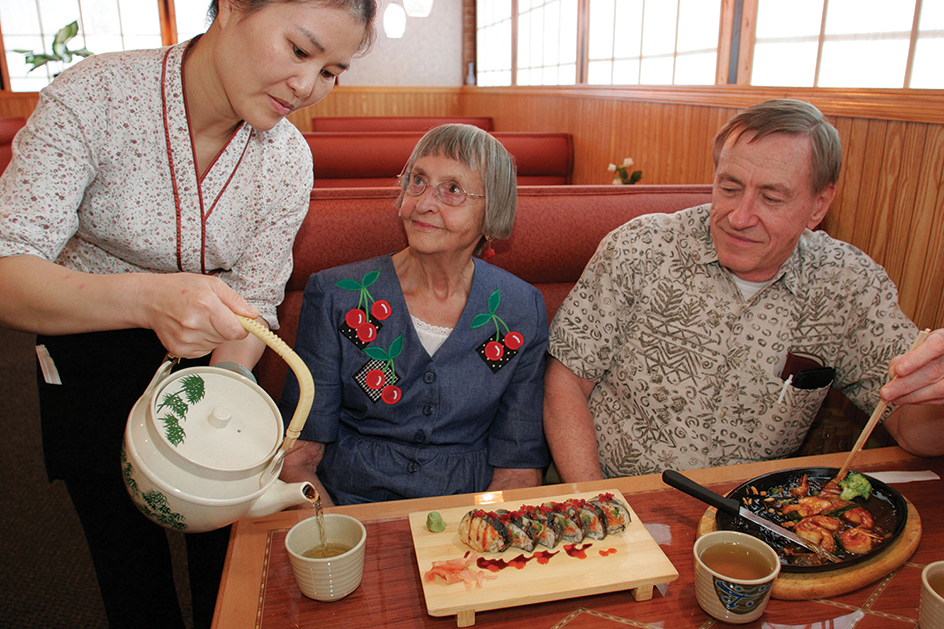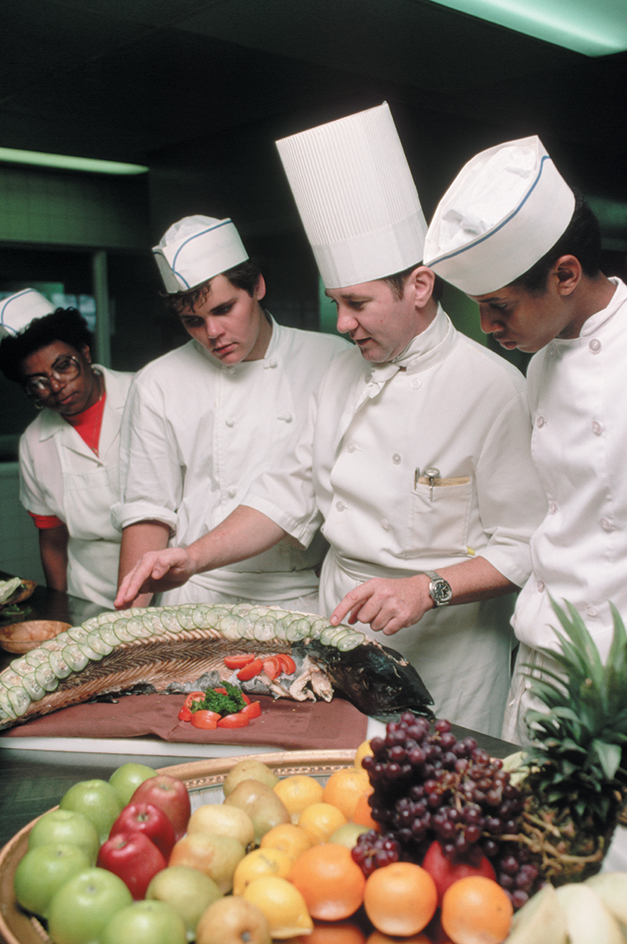Restaurant is a commercial establishment that serves food and beverages to the public. The first restaurants operated along roadsides, where travelers stopped to rest and to restore their energy. The word restaurant comes from a Latin word meaning to restore. Restaurants make up the largest part of the food service industry. All places that prepare food outside the home are part of this industry, including food operations in schools, hospitals, factories, and prisons.

Kinds of restaurants.
People generally classify restaurants as (1) full-service or (2) fast-service.
Full-service restaurants.
In most of these restaurants, customers are seated at a table and given a menu. The menu offers a variety of choices. A server usually takes the customer’s order and brings food to the table. The largest number of full-service restaurants are family restaurants, which offer foods at moderate prices. Full-service ethnic restaurants serve the food of a specific country, such as China, Italy, or Mexico. Fine dining restaurants offer menus that change daily or seasonally and feature somewhat unusual menu choices. Some also feature classical dishes prepared from recipes created by master chefs. Meals served in fine dining restaurants usually cost more than those served in other restaurants because of the better food quality and service provided.
Some full-service restaurants offer home meal replacement. Customers place their order by phone and park their cars in designated areas at the restaurant, where a server delivers their food to take home. Other full-service restaurants offer a buffet. Diners serve themselves various foods placed on a table. In some restaurants, the server brings the main course, and diners serve themselves from a salad bar or a dessert bar.
Fast-service restaurants
, also called fast-food restaurants, provide inexpensive food and quick service. Many of these restaurants serve only such foods as fried chicken, hamburgers, pizza, tacos, or ice cream. Because customers have become more concerned with making healthful food choices, many fast-service restaurants also offer salads and other nutritious foods.
In addition to sit-down services, fast-service restaurants may offer drive-through, carry-out, and home-delivery services. In a drive through, customers place orders from their cars by means of a microphone outside the restaurant building and then drive to a restaurant window to pick up their food. Carry-out services enable customers to pick up prepared food and take it out of the restaurant to eat. Home-delivery service allows customers to have food delivered to their homes.
Chains and franchises.
A restaurant chain consists of two or more restaurants owned by one person or company. Usually, all restaurants in a chain look alike and serve the same food.
In most franchise agreements, a restaurant owner grants another person or company the right to use the name of his or her restaurant. This right also includes use of the original owner’s patented products, building designs, advertising, and trademarks. In return for this right, called a franchise, the original owner receives a fee. In addition, the franchise buyer (called franchisee) usually pays a percentage of the restaurant’s income to the original owner. The franchisee receives services from the original owner, including financial advice, computer programs, and training programs. In most cases, if the franchisee does not maintain standards of food quality, service, and cleanliness in the restaurant, the original owner can cancel the franchise agreement.
Career opportunities.
Employment opportunities in restaurants range from part-time jobs to full-time careers. Restaurant employees include bartenders; servers; cashiers; chefs; cooks; food prep (preparation) workers; dishwashers; buspeople, who set and clear tables; counter workers, who serve fast food; and managers. Restaurant chains employ district managers and regional managers to oversee several operations.

Many restaurant employees learn their jobs while working. Vocational schools and colleges prepare people for restaurant careers through food service and business courses. Cooking schools and apprentice programs provide chef’s training. Restaurants also hire people trained in such fields as advertising, marketing, design, engineering, economics, and nutrition.
